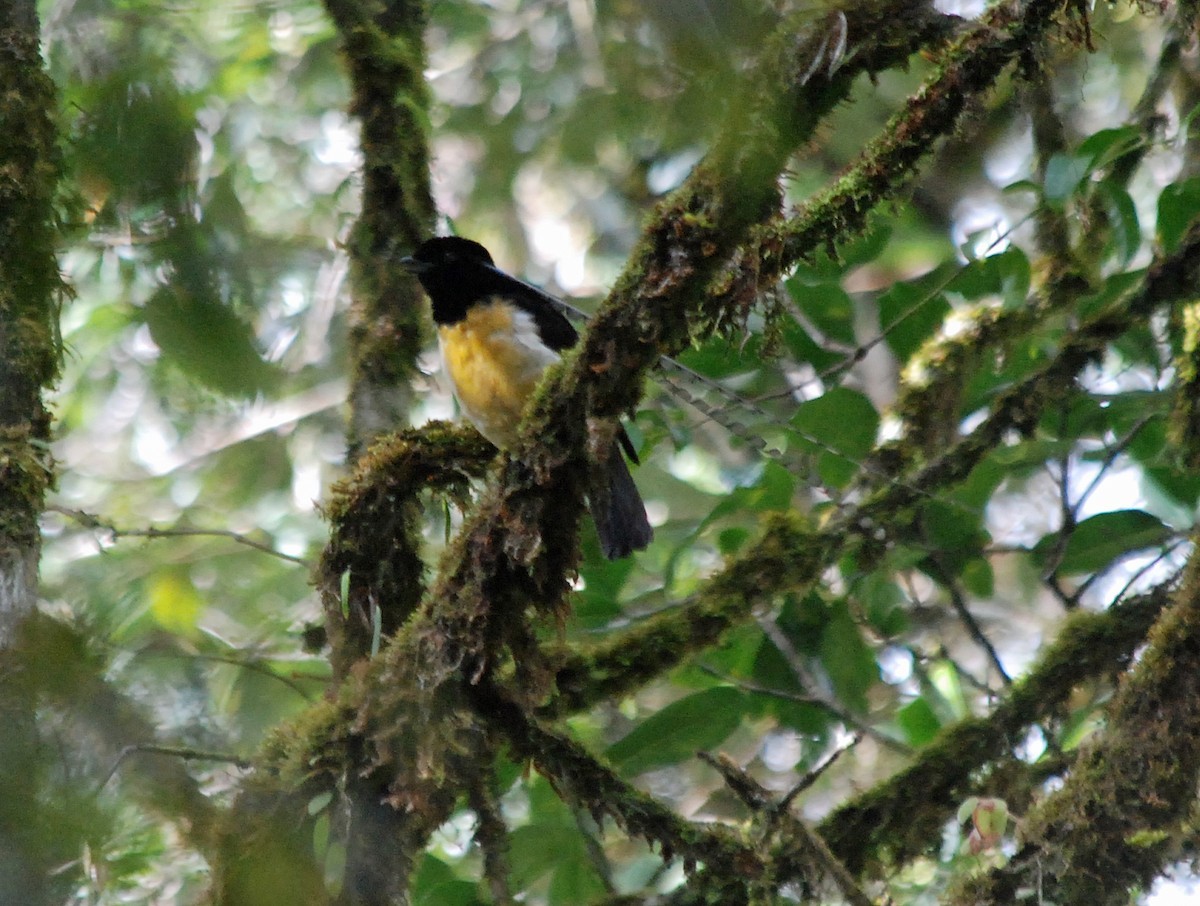King Of Saxony Bird-of-paradise
A species of King Of Saxony Bird-of-paradise Scientific name : Pteridophora alberti Genus : King Of Saxony Bird-of-paradise
King Of Saxony Bird-of-paradise, A species of King Of Saxony Bird-of-paradise
Botanical name: Pteridophora alberti
Genus: King Of Saxony Bird-of-paradise
Content
Description General Info
 Photo By Nigel Voaden
Photo By Nigel Voaden Description
The adult King of Saxony bird-of-paradise is approximately 22 cm long. The male is black and yellow with a dark brown iris, brownish-grey legs, a black bill with a bright aqua-green gape, and two remarkably long (up to 50 cm) scalloped, enamel-blue brow-plumes that can be independently erected at the bird's will. The unadorned female is greyish brown with barred underparts. The male's ornamental head plumes are so bizarre that, when the first specimen was brought to Europe, it was thought to be a fake. 
Size
20 - 22 cm
Nest Placement
Ground
Feeding Habits
King Of Saxony Bird-of-paradise's diet primarily consists of fruits like drupes, especially Timonius belensis, and small prey, such as insects and spiders. This bird forages alone, from treetops to shrubs, often probing mosses and lichens to find invertebrates.
Habitat
King Of Saxony Bird-of-paradise typically inhabits montane and forest edge environments within broader geographical regions characterized by robust forest ecosystems. These birds are known to thrive in areas that have undergone minimal disturbance, such as those surrounding hunting lodges and established tracks. Their habitat selection reflects a preference for regions that maintain a natural forested landscape, ensuring a suitable setting for their ecological needs.
Dite type
Insectivorous
General Info
Feeding Habits
Bird food type
Behavior
Adult males are territorial. The male guards its territory from perches placed in the tops of tall trees, and from these perches sings to compete with males in neighbouring territories. While singing, the male moves his occipital plumes about. In 1996 David Attenborough filmed the first ever footage of the mating ritual of the bird. The diet consists mainly of fruits, berries and arthropods. 
Distribution Area
The King of Saxony bird-of-paradise inhabits the montane forests of New Guinea, and is distributed from the Weyland Mountains in Western New Guinea to the Kratke Range and Mount Giluwe in Papua New Guinea between 1,300–2,850 meters above mean sea level, but usually between 1,800–2,500 meters above sea level. Moulted head-plumes in good condition are sought by male Archbold's bowerbirds for use as decorations, and in turn collected from the courtship bowers by humans. Males are also hunted for their highly prized long plumes used by natives for ceremonial decoration, but despite this the species remains fairly common in parts of its range. It is considered to be of least concern on the IUCN Red List of Threatened Species. It is listed on Appendix II of CITES. 

 Photo By Nigel Voaden
Photo By Nigel Voaden Scientific Classification
Phylum
Chordates Class
Birds Order
Perching birds Family
Birds-of-paradise Species
King Of Saxony Bird-of-paradise